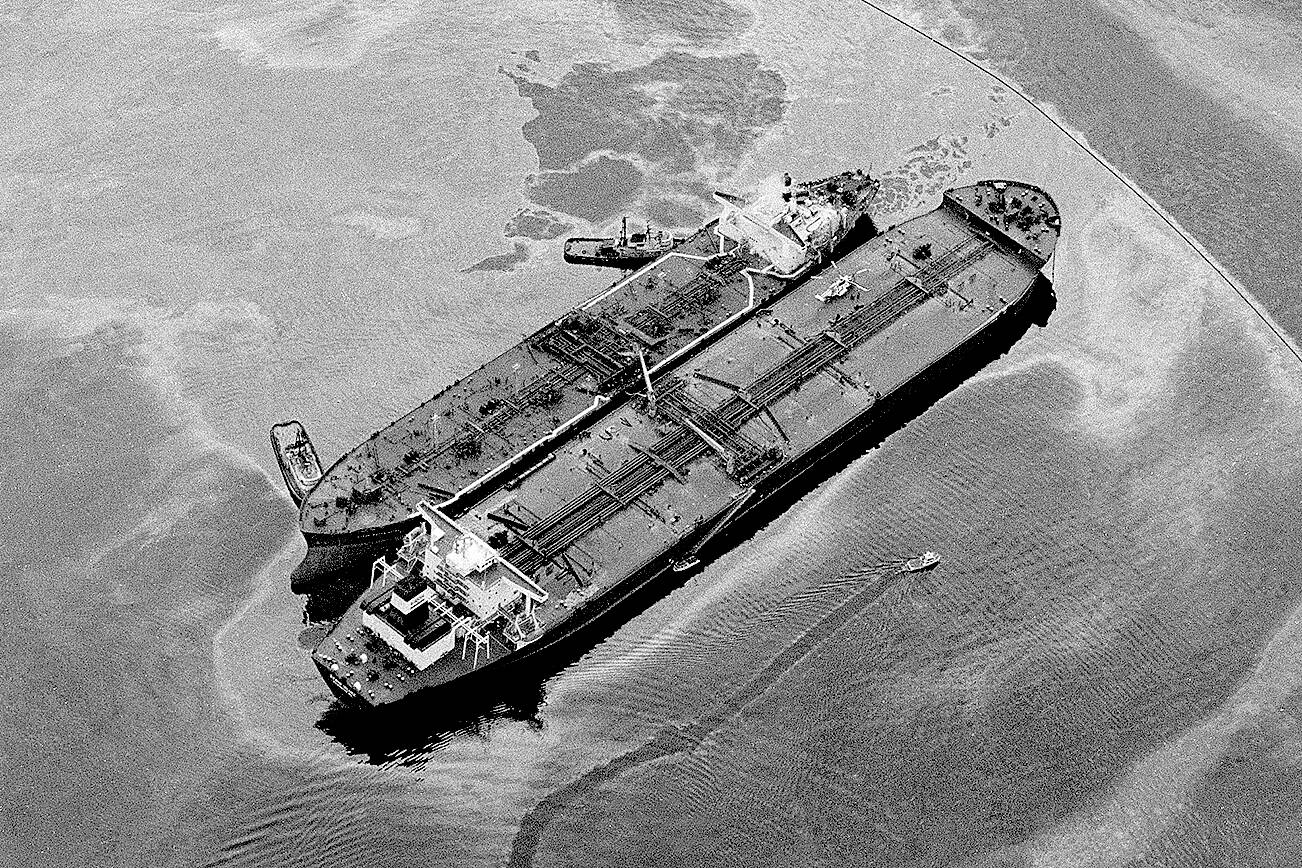As the 35th anniversary of the Exxon Valdez Oil Spill approaches on March 24, retired fisheries biologist Loren Flagg told the Homer News that the key to keeping a spill disaster like this from reoccurring is to stay on top of prevention strategies and techniques.
“Prevention is the key. We have to do everything we can to prevent this from happening again. We’ve accomplished some of that, but for example, we still don’t have tanker escort boats in the inlet. I think things are better but I hope this never happens again,” he said.
In 1989, Flagg was employed by the Kenai Peninsula Fishermen’s Association. On March 24, the Exxon Valdez grounded on Bligh Reef in Prince William Sound and spilled more than 11 million gallons of oil.
By April 6, Kenai Peninsula Borough Mayor Don Gilman had developed a multiagency coordination council based out of Homer and Flagg was appointed chairman.
The MAC team met daily for the first six weeks of the spill cleanup response efforts out of concern for environmental impacts to marine critical habitat areas in Cook Inlet and Kachemak Bay (as well as the outer Gulf Coast of Alaska).
Team members included representatives from state agencies, the North Pacific Fisheries Management Association, Larry Smith representing Kachemak Bay subsistence, anthropologist Janet Klein with the Pratt Museum, the U.S. Coast Guard, U.S. Fish and Wildlife Service, the City of Homer, Seldovia, Port Graham and English Bay and more.
Flagg told the Homer News that at the time, the MAC team was extremely disappointed with Exxon’s response to the spill and that the company was not providing the resources necessary to protect the marine environment or to clean up the spill itself.
For example, he noted that Exxon sent a representative to the MAC team solely for the purpose of public relations but not to provide any technical assistance to the communities for cleanup facilitation or for oil boom deployment.
Flagg noted particular concern for the region’s salmon streams, bird habitat areas, clam and mussel habitat as well as marine vegetation. “We just didn’t get any corporate level response to what we needed to appropriately protect the environment. A PR representative was not what we needed, we got no help there,” he said.
On April 21 of 1989, U.S. Rep. Don Young and U.S. Sen. Ted Stevens came to Homer to assess oil spill response progress. At that time, spill response cleanup was primarily being handled by Exxon because the Coast Guard had already determined the spill would not be federalized.
However, a group of concerned citizens in the Homer region wanted someone else to be responsible for it and Congressman Young requested that Flagg take charge.
In a short amount of time, the borough decided to take the cleanup efforts into their own hands. Don Gilman held a meeting with Exxon and other state officials. “We got Exxon to pledge two million dollars to the Kenai Peninsula Borough. We wanted to handle the response instead of them because they weren’t doing anything,” Flagg said.
The amount was eventually cut back to $1 million and once it was secure the borough was able to secure booms on their own.
“There was so much displeasure with Exxon that there were a lot of people who simply pledged not to purchase their fuel and we held to that for nearly 20 years. We were just so fed up with them,” Flagg said.
When asked what advice he would give students in an oil impact workshop like the one held in Homer a few weeks ago, he said, “we do have a better response capability now than we had back then. It’s not perfect but CISPRI does have a lot of equipment and there are people trained to respond.”
He explained that if there is an accident in Cook Inlet because of the strength of the tides in the region, once the oil is in the water, a spill response team might be able to conduct some containment, but the oil will get away with the tides.
Flagg’s book is titled “Fish, Oil and Follies: Fish Wars and Oil Battles of an Alaska Biologist and Fishing Guide.” Flagg still lives on the Kenai Peninsula in Kenai.



